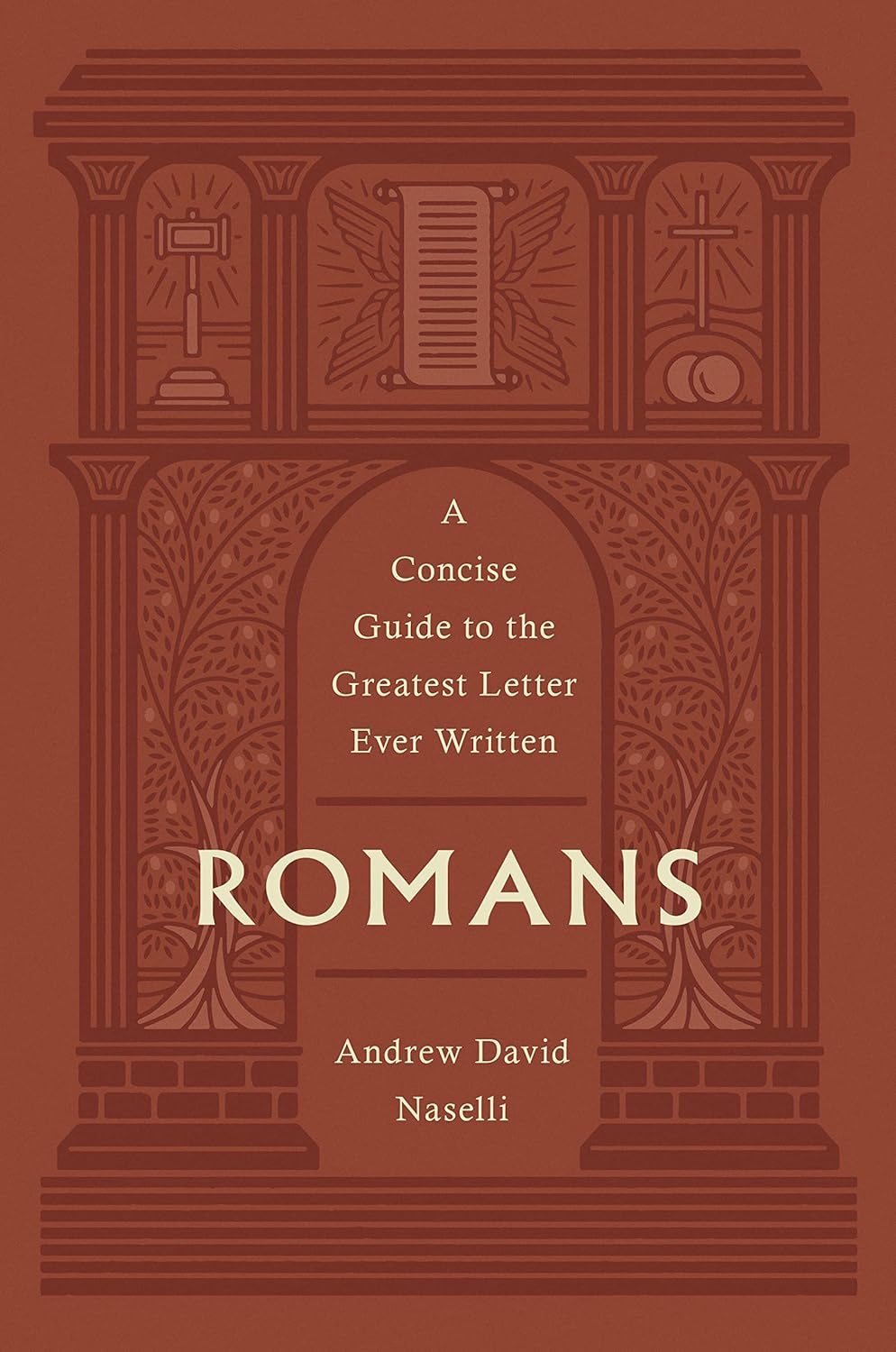A Book Review for Books at a Glance
by Zachary Horn
For Christians, there is a unique sense of joy and wonder associated with studying the Apostle Paul’s letter to the Romans. The soul-stirring articulation of the gospel, the profundity of theological truths and divine mysteries, and the concrete practical applications this letter contains have absorbed theologians and the laity alike throughout the history of the church. All of which makes Andrew David Naselli’s book aptly titled: Romans: A Concise Guide to the Greatest Letter Ever Written. Naselli gifts the church with an accessible and thoughtful examination of the argument of this great letter, artfully interacting with the best of Pauline scholarship along the way.
It is a tall order to provide a unique and insightful approach to a study of Romans, yet that is precisely what Naselli has done. The singular feature of this brief study of Romans is the attention given to tracing the flow of the Apostle’s argument throughout the epistle. Immediately following the introductory comments, Naselli provides an exegetical outline that carefully maps the development of Paul’s thought as expressed throughout the various movements of the epistle (29–32). The chapters then progress along this outline, with the content of each chapter focused principally on two primary objectives: demonstrating how the sentences, clauses, or paragraphs relate to one another in the logical development of the argument, and how these sections build upon and form the structure of the theological themes that comprise the content of the letter.
There is an unfortunate tendency among many commentators to treat biblical texts in an atomistic fashion, in a manner that frequently obscures the development of the broader theological argument or themes within the book. Naselli’s work is like a breath of fresh air in this regard—he traces the progression of the argument throughout Romans in a way that clarifies and simplifies where others lose the trail in a sea of complexity. Yet this does not mean that this helpful book skirts addressing the interpretive and theological challenges this letter poses—far from it. The great strength of this study is that Naselli manages to keep the development of the theological argument firmly in view while maintaining an active dialogue with alternative interpretive proposals and viewpoints at critical junctures. Here also, we can thank the publisher for providing footnotes (instead of endnotes) and thus allowing those who enjoy engaging with cited materials, to evaluate Naselli’s significant interaction with many of the foremost Pauline scholars and commentators.
For those familiar with the broader body of Naselli’s writing and scholarship, it will come as little surprise that interspersed within the pages of this book are numerous charts and tables that help to visually demonstrate the logical relationships between various clauses contained in Romans. This is itself an invaluable resource given the frequent complexity of the Apostle’s notoriously lengthy sentences and profound theological depth of his argument. The use of these tables throughout the book is tremendously clarifying and brings the Apostle’s argument into vivid focus in ways that are frequently missed by a cursory reading of the text. If one reads this book with, as Naselli suggests, the pages of Romans open beside you, it will be difficult to come away without having one’s understanding of the structure, argument, and beautiful theology of this epistle profoundly enhanced.
If there is a critique to be offered, it is not one that is overly serious or even entirely the fault of the author—readers may find that it takes a bit of reading before they are able to decide precisely how to use this book. I found that while I was tremendously edified in my reading, I also recognized that this book sits in a bit of a niche that may challenge some readers. It is certainly less technical than most commentaries and therefore will be insufficient to satisfy the demands of those in need of greater textual analysis. It is also significantly less expositional than most studies written for the laity who might expect a bit more “color” or background commentary, as well as a greater emphasis on practical application. At times the commentary is quite sparse, and the emphasis is clearly to express the structure and logic of the text in a way that phrasing or arcing are often used. This is not a flaw in the book itself—as noted above, the uniqueness of Naselli’s approach is an undoubted strength—but some readers may be uncertain of how to utilize a resource like this.
Naselli somewhat anticipates this and has written a helpful preface to orient the reader by providing six suggested ways of using his book (13–17). I heartily concur with Naselli that this book is an excellent companion to other Bible study resources, serves well as a group study guide, or as a means of facilitating a deeper personal study of Romans (with this book accompanied by an open Bible). The study/discussion questions for each chapter (situated at the back of the book) are well crafted to facilitate personal reflection and insightful discussion. To these proposed uses I would add that this concise study is admirably suited to aid pastors as a preparatory resource for mapping a sermon series through Romans. Before engaging with more technical commentaries or expositional resources, this book would serve pastors well by ensuring they firmly grasp the broader theological themes and arguments contained in this magnificent letter.
Incredibly, Naselli has succeeded in providing a contribution to the many books written on Romans that is not redundant, dated, or esoteric. This book will serve the church well by providing a useful study guide and devotional aide for the laity, and an invaluable contribution to any pastor’s library. This work will help readers see and savor the glory of God in the glorious gospel of Jesus Christ—praise God!
Zachary Horn
